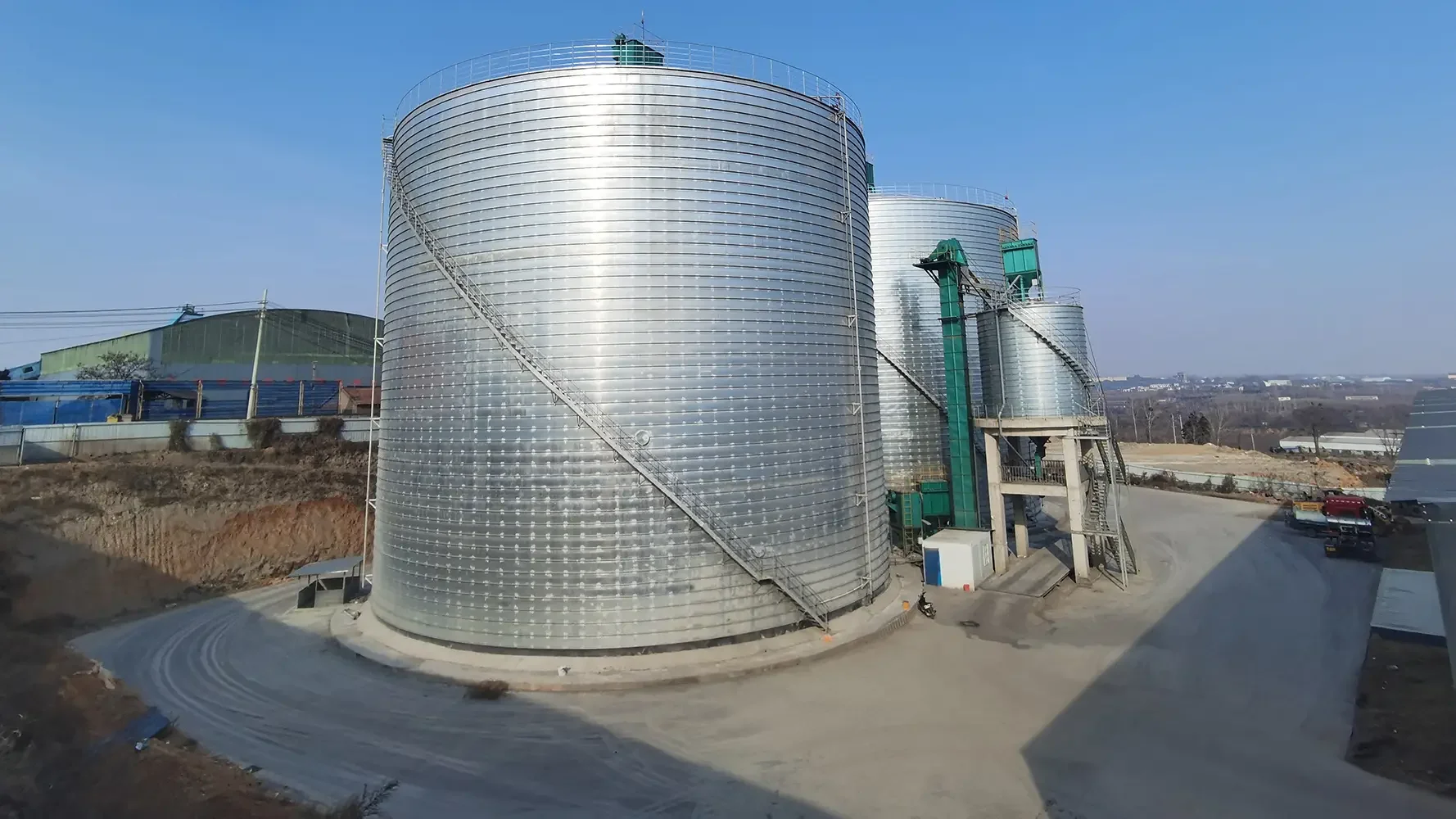Fly ash, a byproduct of coal combustion, plays a critical role in modern building materials such as concrete, cement, and bricks. Its proper storage not only ensures material quality and availability but also supports environmental sustainability by reducing waste and pollution. The fly ash storage silo design is, therefore, an essential part of industrial infrastructure in power plants, cement factories, and material handling facilities. Among various solutions, modern steel silos stand out as cost-effective and durable choices for storing fly ash safely and efficiently. In this blog post, Anyang Flyer, a high quality steel silo manufacturing factory, will share the characteristics of fly ash storage silo design, its advantages, etc.
Fly Ash Silo Features: Structural Safety and Efficiency
Silo Structural Modeling and Safety Assurance
A well-engineered fly ash silo design must prioritize structural safety to prevent deformation, collapse, or leakage. The design process involves precise structural modeling and load-bearing calculations, ensuring that the silo can withstand internal pressure, environmental factors, and seismic impacts. Advanced construction techniques, such as spiral folding or continuous seaming, significantly enhance overall strength, stability, and seismic performance. This ensures that fly ash remains safely stored for extended periods, even under demanding industrial conditions.
High Storage Quality: Ensuring Long-Term Material Integrity
Superior Sealing for Extended Storage Periods
One of the biggest challenges in fly ash storage is maintaining the material’s dryness and flowability. Any moisture infiltration can cause fly ash to clump and harden, making discharge difficult and reducing usability. Modern steel silos solve this issue with multi-layer sealing technology, which guarantees airtightness, rainproofing, and leakproofing. The use of high-quality steel and precision welding further prevents corrosion and ensures that the silo interior remains contamination-free. This results in stable fly ash quality and long-term storage capability—critical for maintaining the consistency of cement and concrete production.
Worry-Free Discharge: Smooth Material Flow and Handling
Gasification Discharge for High Discharge Rates
Efficient discharge is a vital component of any fly ash silo system. To avoid blockages and uneven material flow, advanced silo designs incorporate gasification discharge systems, which use controlled airflow to fluidize the fly ash at the bottom of the silo. This technology ensures a high discharge rate, minimal residue, and smooth material transport to processing lines. Operators benefit from reduced maintenance, less downtime, and greater process reliability—key advantages in high-demand industrial environments.
 Outstanding Quality: Materials and Manufacturing Excellence
Outstanding Quality: Materials and Manufacturing Excellence
Steel from Trusted Global Suppliers Ensures Durability
The reliability of a fly ash storage silo depends heavily on the quality of its materials. Leading manufacturers use premium-grade structural steel sourced from reputable suppliers, ensuring high strength, corrosion resistance, and consistency. The continuous forming and double-seam construction method eliminates weak points commonly found in welded joints. This precision manufacturing approach guarantees long service life, high durability, and low maintenance, providing long-term value for industrial users.
Advanced Steel Silo: The Next-Generation Fly Ash Storage Solution
Technical Advantages of Modern Steel Silo Construction
Modern steel silo systems have revolutionized bulk material storage with their superior strength, sealing, and cost efficiency. They are now widely used in power plants, cement plants, grinding stations, and transfer terminals for storing dry bulk materials like fly ash, cement, and coal dust.
Key technical performances include:
High structural integrity and long lifespan – The continuous seaming process produces a strong, uniform structure, giving the silo excellent load-bearing capacity and resistance to deformation.
Excellent sealing performance – Prevents leakage and moisture intrusion, maintaining optimal storage conditions for dry materials like fly ash.
Fast on-site construction – With forming speeds of several meters per minute, a medium-sized silo can be built in under 10 days, reducing project lead time and labor costs.
Lightweight and cost-effective – The use of thin, high-strength panels minimizes material consumption and overall costs, making it more economical than traditional concrete silos.
Efficient Space Utilization and Easy Maintenance
Compact Footprint and Flexible Design
One of the practical advantages of fly ash silo design is its flexible configuration. The silo’s height and diameter can be customized according to project requirements, optimizing site layout and space utilization. Because steel silos require only minimal spacing between units, they are ideal for compact industrial zones. Additionally, their modular structure allows for easy inspection, cleaning, and maintenance, ensuring safe and reliable long-term operation.
Environmental and Economic Benefits of Fly Ash Recycling
Fly ash is more than just a byproduct—it is a valuable industrial raw material that can replace a portion of cement in construction materials. Effective fly ash storage system design ensures consistent supply for recycling, thereby reducing pollution, lowering carbon emissions, and improving the circular economy of industrial production. By adopting efficient and durable steel silos, enterprises can contribute to sustainable development while achieving significant economic and environmental gains.
Conclusion
The evolution of fly ash silo design represents a major advancement in industrial material management. Modern steel silos combine structural safety, high storage quality, reliable discharge, and long-term durability, offering a comprehensive solution for industrial storage needs. Their proven efficiency, cost-effectiveness, and adaptability make them the ideal choice for power plants, cement manufacturers, and environmental engineering projects seeking to optimize operations and support sustainable production.
Through smart engineering and advanced materials, the modern fly ash storage silo not only protects valuable resources but also contributes to cleaner production and a more sustainable industrial future.
www.flyersteelsilo.com
Anyang Flyer
 Outstanding Quality: Materials and Manufacturing Excellence
Outstanding Quality: Materials and Manufacturing Excellence